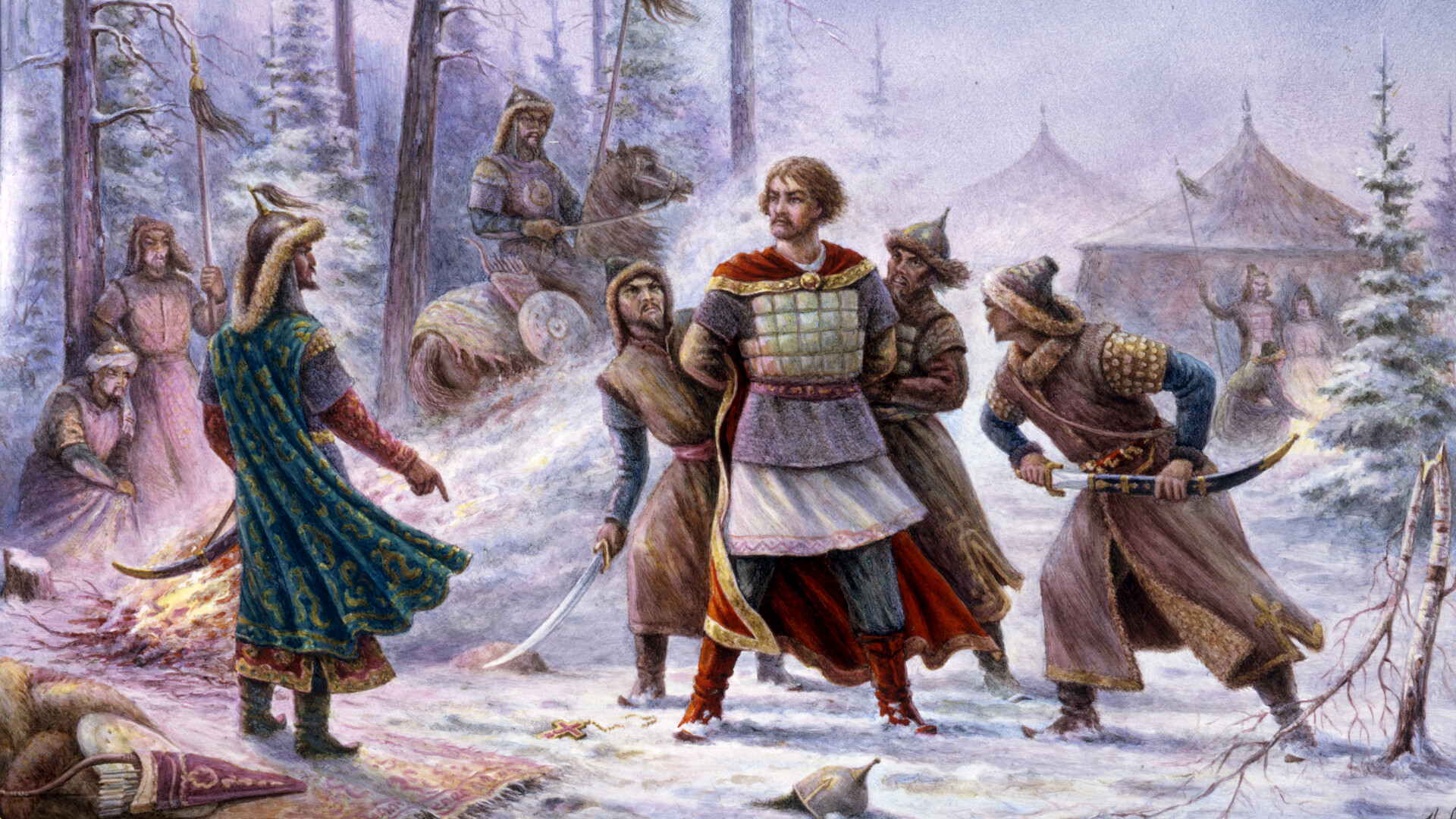
Episode from the life of Russia in the period of the Tatar yoke.
Nikolay Kulandin / Russian Look“For our sins, unknown peoples, godless Moabites, came, about whom no-one knows for sure who they were, where they came from, what language they spoke, what tribe they belonged to or what faith they professed” was how a chronicler described the first appearance of Mongol forces on the Russian borders in 1223.
On that occasion, however, the Mongols didn’t plan to invade Rus’ [name for medieval Russia - Ed.]. Their raid on the East European Plain, led by commanders Subutai and Jebe, was more a reconnaissance mission than a campaign of conquest.
Crossing the Caucasus mountains, the 30,000-strong Mongol army reached the steppes of the Northern Black Sea region and attacked the nomadic tribes of the Turkic-speaking Polovtsians, beyond whose lands the Russian principalities lay. Despite the fact that the princes’ relations with these neighbors were far from ideal, they decided to answer a plea for help from Köten (Kotyan), the khan of the Polovtsians, and to put up a united front against the Mongols.
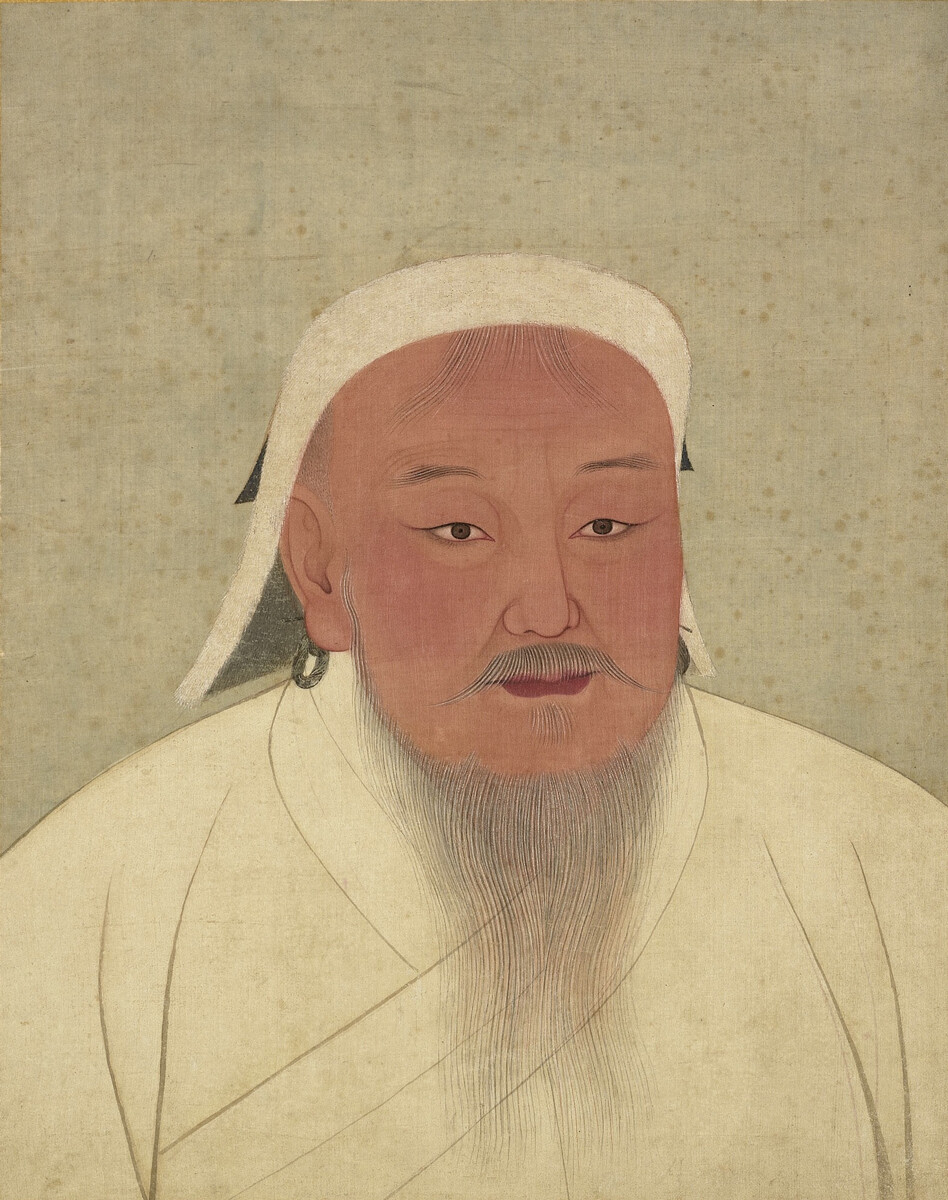
Genghis Khan.
National Palace Museum in TaipeiIn the Battle on the River Kalka (on the territory of Eastern Ukraine), fought on May 31, 1223, the forces of Rus’ and of the Polovtsians were routed: Only one soldier in 10 survived and at least nine princes and a large number of high-born boyars lost their lives. An underestimation of the enemy, the absence of a single command and a lack of coordination among military leaders were the causes of the disaster.
After winning the battle, the Mongols withdrew to the east and over the years the fear and horror instilled in the hearts of the Russians after what they had been through started gradually to recede. But, in 1237, the powerful empire gave a reminder of itself once again. In the large-scale Western Campaign led by Genghis Khan’s grandson Batu and Subutai, who was by now well acquainted with the region, 14 hereditary Genghisids [direct descendants of Genghis Khan - Ed.] took part. Each of them had a tumen - 10,000 horsemen - under their command. According to another version, the strength of the Mongol army did not exceed 40,000 men.
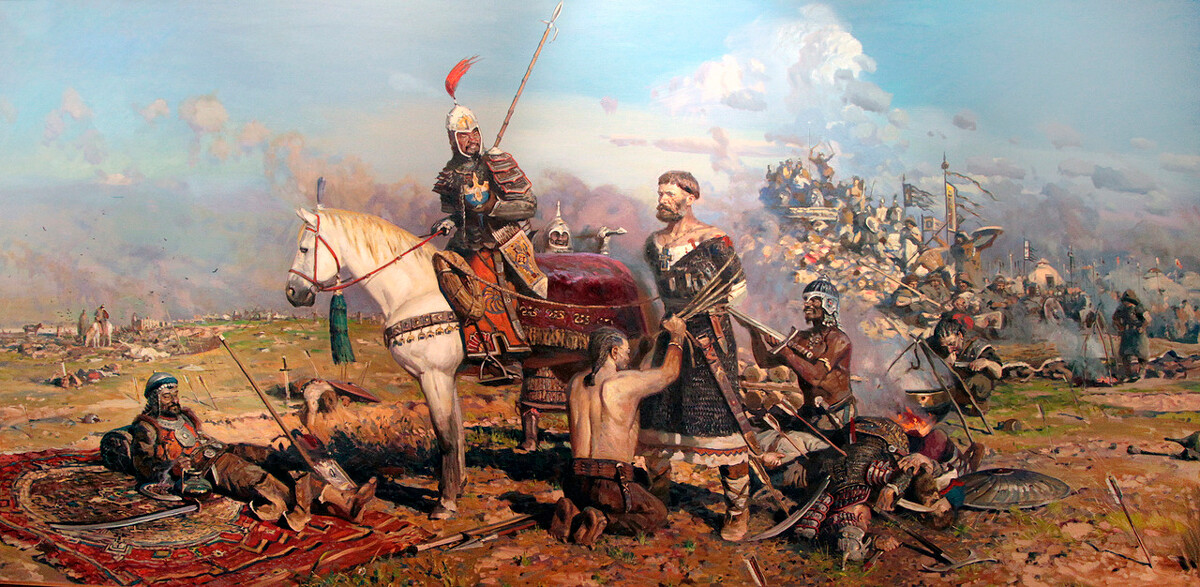
Kalka.
Pavel RyzhenkoWhatever the case, a mass of warriors enormous by the standards of the time, trained to perfection in the skills of horsemanship and archery and, in addition, backed up by a diverse arsenal of siege weapons from subjugated China, was moving westwards. It was confronted by the disparate forces of the ever-squabbling Russian principalities, which failed to unite even in the face of this great danger.
The Principality of Ryazan lay in the path of the Mongols. It asked its neighbors - the Vladimir-Suzdal and Chernigov principalities - for help, but the former delayed sending troops and the latter refused to help altogether, because Ryazan had avoided taking part in the conflict with the Mongols in 1223.
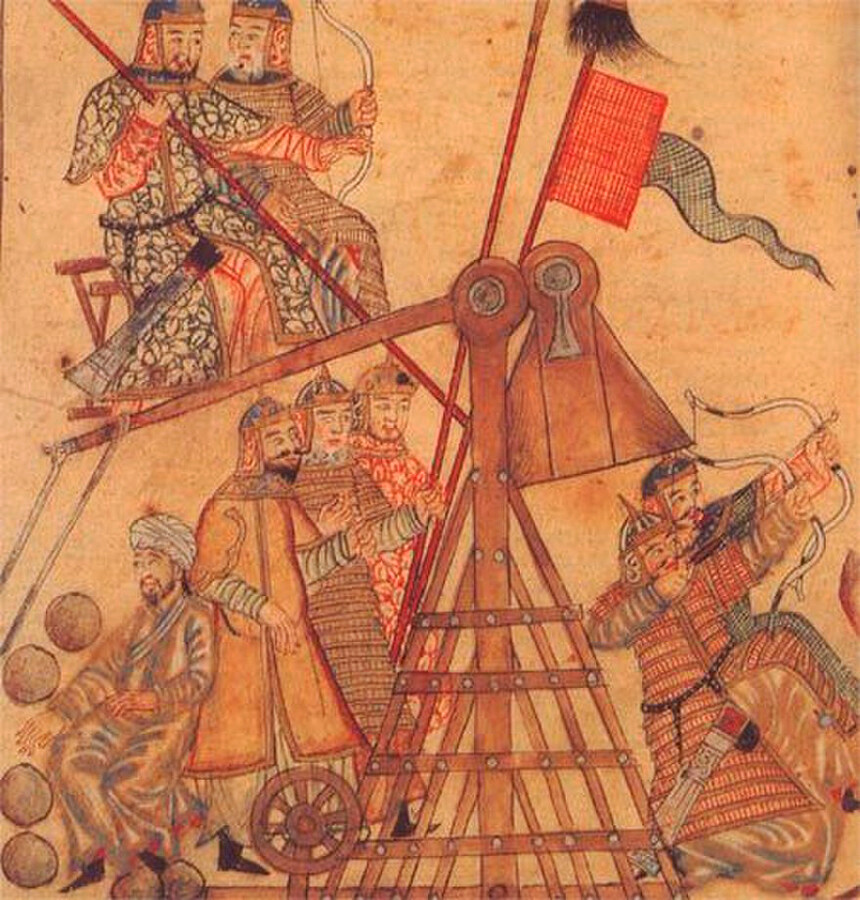
Mongol troops near catapult. Miniature from the Rashid al-Din's cronicle, 1307.
Public DomainDespite the lack of support, the people of Ryazan decided to resist and responded as follows to an ultimatum from the Mongols to hand over one-tenth of all their wealth: “If none of us are left, it will all be yours!” The city fell on December 21, 1237, after a five-day siege. “And not a single living being was left in the city, all perished together and all drank from the same cup of death. No-one was left to wail or lament: no father or mother to mourn their children, no child to mourn his father and mother, no brother to mourn his brother or kinsfolk, but everyone lay dead together. And it all came to pass for our sins!” narrates the ‘Tale of the Destruction of Ryazan by Batu’.
Near the town of Kolomna on January 1, 1238, the Mongols crushed a force that was on its way from Vladimir to relieve Ryazan. But, the invaders also suffered a significant loss that day. One of Genghis Khan’s sons, the prominent commander Kulkan, fell in battle to become the only Genghisid to die in the course of the campaign against Rus’.
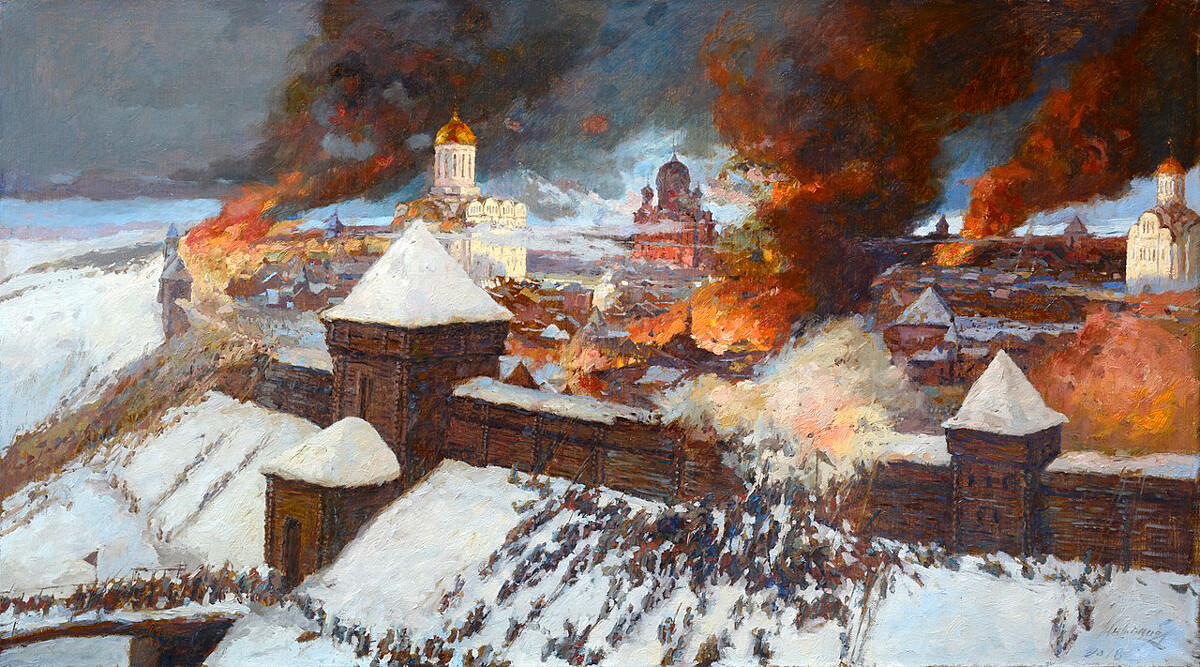
Siege of Ryazan.
Andrey Mironov (CC BY-SA 4.0)As they continued their onward march, the Mongols came under surprise attack from the “little detachment” of the Ryazan noble Evpaty Kolovrat, who had got back to his native Ryazan after the siege was already over. With the small forces under his command, Kolovrat managed to deal damaging blows to the enemy troops and even to destroy the Mongols’ rearguard. The valiant warrior came to the attention of Batu Khan himself. After Evpaty’s death in battle, the khan was so filled with admiration that he ordered that his body be handed over to the captives taken at Ryazan and that they should be released.
The Mongols passed with fire and sword through the lands of the Vladimir-Suzdal Principality, ravaging a number of villages and cities, including Moscow. The capital of the principality, Vladimir, fell on February 7, with the family of its ruler, Yuri Vsevolodovich, perishing in the flames. The grand prince himself was not in the city at the time. He was mustering forces on the River Sit, where he was killed with almost all of his troops on March 4, after being defeated by Mongol commander Burundai. Thus, it was that the whole of northeastern Rus’ was subjugated to the Mongols.
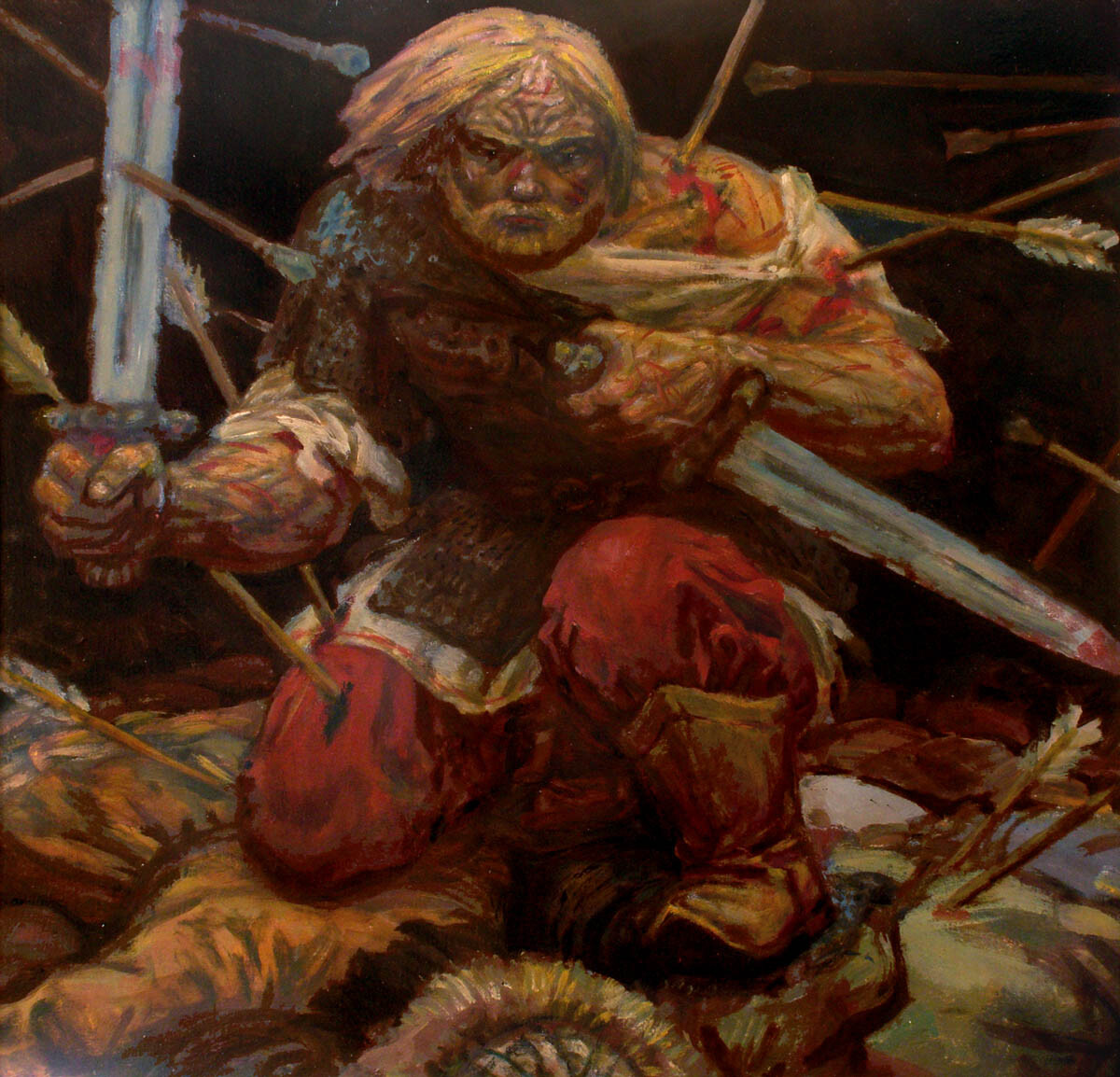
Evpaty Kolovrat.
Max Presnyakov (CC BY-SA 3.0)Fighting the powerful principality of Vladimir drained the resources of the invaders, whose offensive gradually started to stall. Batu Khan did not risk attacking the major trading center of Novgorod, his troops were pushed back from Smolensk and he had to besiege the small town of Kozelsk for more than 50 days. When it was finally taken, the angered khan ordered all the inhabitants to be put to death (as the chronicle puts it, 12-year-old Prince Vasily “drowned in blood”) and the “evil town” to be leveled to the ground.
The Mongols needed a respite and they only resumed their offensive against Russian lands the following year. This time it was the southern principalities that were devastated. On March 3, 1239, Pereyaslavl, previously considered impregnable, was taken; on October 18, Chernigov suffered the same fate; and, on December 6, ancient Kiev fell. “The city was very large and populous and now it has been reduced to almost nothing: There are hardly 200 houses standing there…” wrote Giovanni da Pian del Carpine, an Italian and member of the Franciscan order who visited the former capital of Kievan Rus’ in 1245. After laying waste to Galician and Volhynian lands, the Mongols invaded Hungary and Poland.
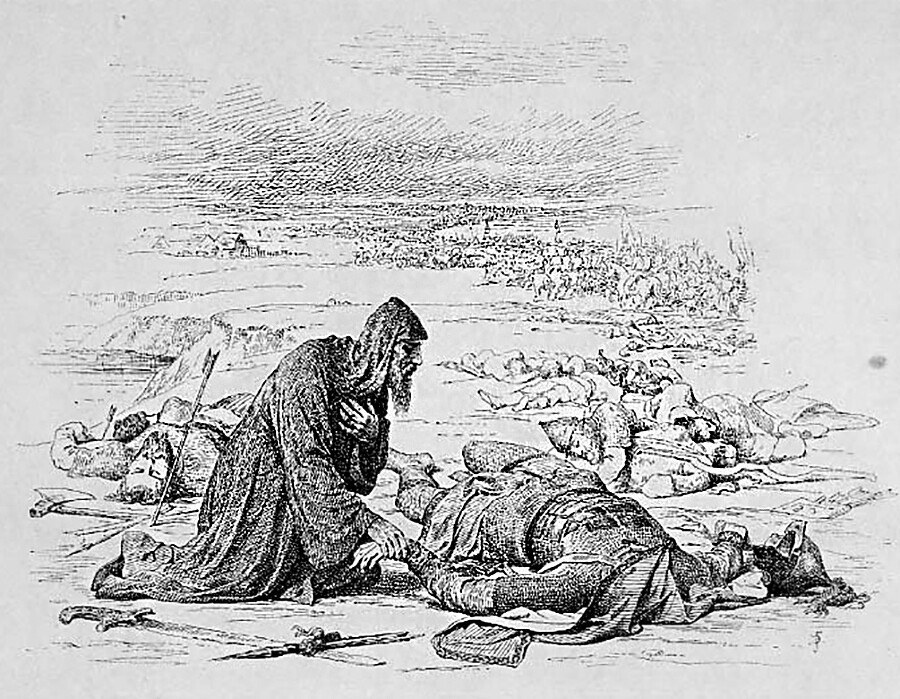
Decapitated body pf prince of Yuri Vsevolodovich on the battlefield.
Vasily VereshchaginRus’ had suffered a crushing defeat: A huge number of people were killed or taken into captivity and 49 of 74 known towns were destroyed, with 14 of them never coming back to life and another 15 reduced to small villages. A mighty blow was dealt to the economy and to culture - a large number of valuable manuscripts went up in flames and many churches were turned to rubble.
Stretching from Crimea to Siberia, the mighty Mongolian state of the Golden Horde did not occupy Russian lands, but instead imposed its political and economic dominion on them. Henceforth, it would be the khans who decided who governed Rus’ and in what manner, while the princes were forced to go to the khans to obtain a yarlyk (official edict) permitting them to rule in their own lands.
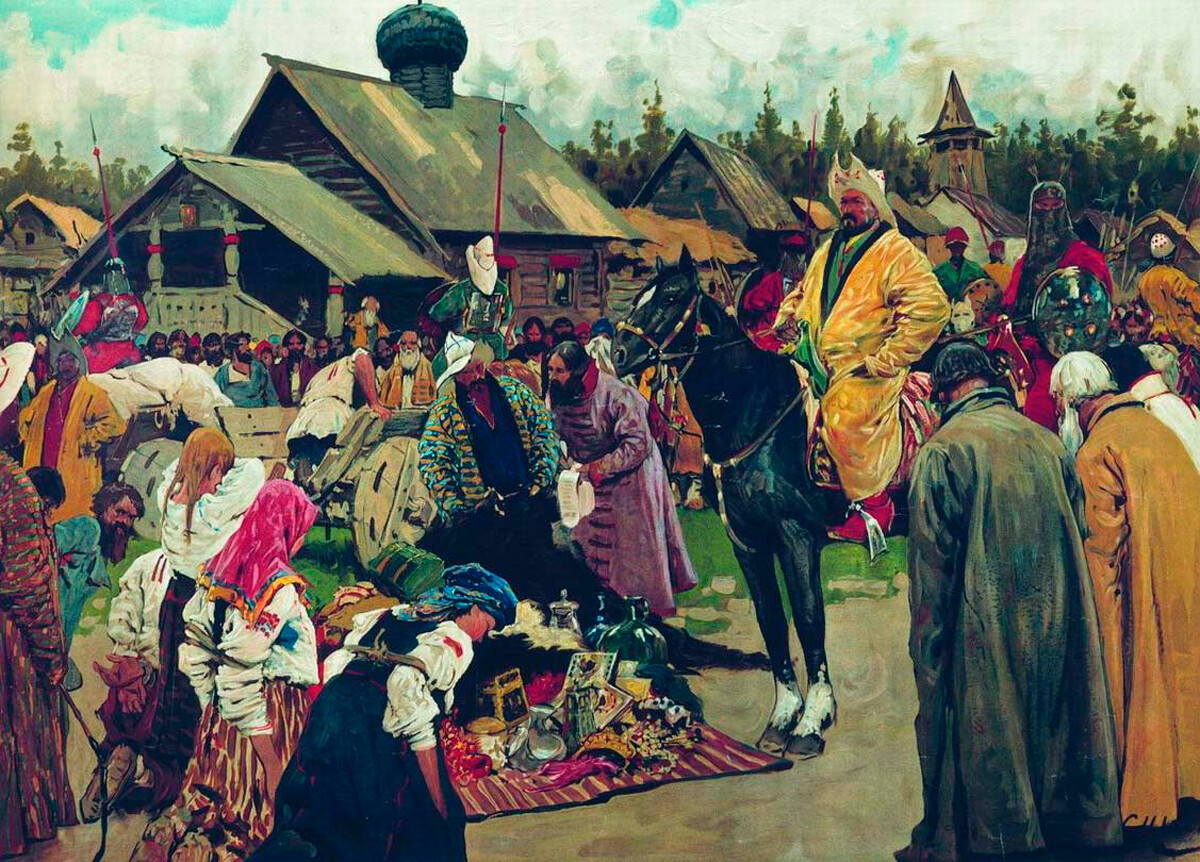
Basqaq (Mongol official, who was in charge of taxes and administration in a certain province).
Sergey IvanovIf using any of Russia Beyond's content, partly or in full, always provide an active hyperlink to the original material.
Subscribe
to our newsletter!
Get the week's best stories straight to your inbox